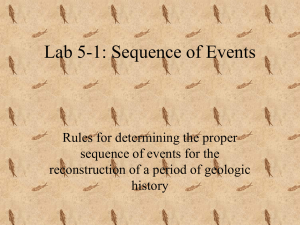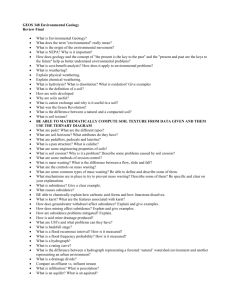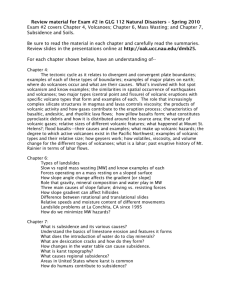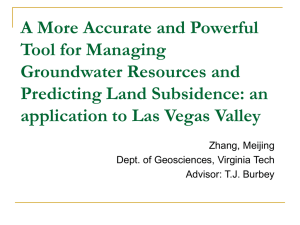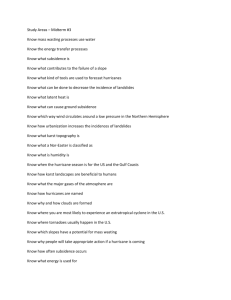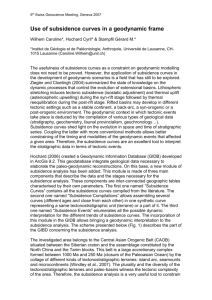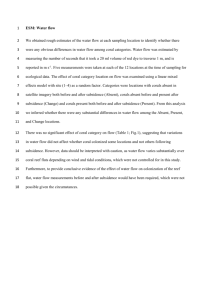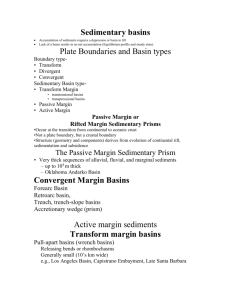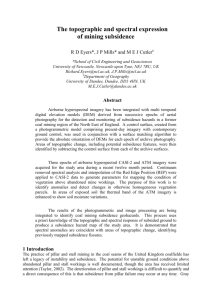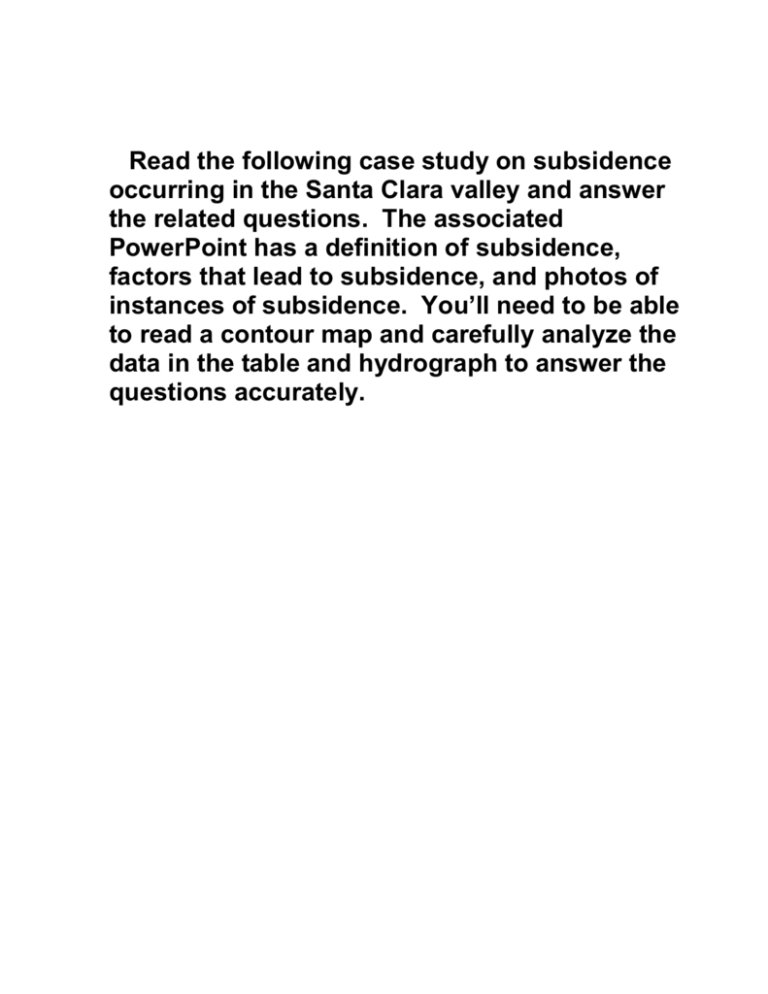
Read the following case study on subsidence
occurring in the Santa Clara valley and answer
the related questions. The associated
PowerPoint has a definition of subsidence,
factors that lead to subsidence, and photos of
instances of subsidence. You’ll need to be able
to read a contour map and carefully analyze the
data in the table and hydrograph to answer the
questions accurately.
That Sinking Feeling
That Sinking Feeling
Investigating Groundwater Subsidence
Groundwater removal from unconsolidated sediments may result in sediment compaction
as pore spaces collapse when water is withdrawn. This can cause subsidence, or sinking,
of the ground surface. In Figure 1 below you see an artesian well flowing from a sand
aquifer. As the water leaves the sand and empties the pore space, the sand compacts.
Fig. 1
Land subsidence because of withdrawal of ground water is a serious problem. Obviously, in
coastal areas subsidence can mean that the land surface drops below sea level. In the Santa Clara
Valley of California, some 17 square miles are now below the highest tide level in San Francisco
Bay and must be protected by earthwork dams. Subsidence in cities like Houston causes serious
flooding problems, especially during heavy rain events like hurricanes. Other centers of
subsidence include Mexico City, Tokyo, and Las Vegas. With increasing withdrawal of
groundwater and more intensive use of the land surface, the problem of subsidence may be
expected to become more widespread.
Humans are usually the culprits in causing land subsidence. When we pump out large amounts
of water for cities or for agriculture we can cause dramatic sinking.
The most famous case of land subsidence is in Pisa, Italy. The Leaning Tower of Pisa was built
on soft, river valley sediments. Since the tower was built in 1174 AD, it has been sinking an
average of 1 millimeter per year. In order to arrest the sinking and prevent the Leaning Tower
from toppling over, modern engineers have worked to develop a plan of injecting cement into
deep cores below the tower to firm up its footing. Interestingly, the Italian government has
decided not to straighten the Leaning Tower, but to just prevent it from any further sinking.
Other cities have instituted plans to prevent land subsidence. Santa Clara, California has limited
the amount of pumping from the water table aquifer to prevent further compaction and imports
®
Copyright © 2012 Laying the Foundation , Inc., Dallas, TX. All rights reserved. Visit us online at www.ltftraining.org.
3
That Sinking Feeling
water to inject back into the aquifer. Arizona and Texas have both established new groundwater
policies that address the problem of subsidence.
The map below shows the sinking in the Santa Clara Valley from 1934-1967.
Gray areas of the map
are consolidated rocks.
Fig. 2
Table 1 shows data from a USGS data point located in San Jose. The total sinking from 1912 to
1967 was 12.7 feet. Recharge measures were enacted in 1967 to arrest any further subsidence.
Table 1: Subsidence at bench mark P7 in San Jose
Year
1912
1920
1934
1935
1936
1937
1940
1948
1955
1960
1963
1967
®
Subsidence (feet)
0.0
0.3
4.6
5.0
5.0
5.2
5.5
5.8
8.0
9.0
11.1
12.7
Copyright © 2012 Laying the Foundation , Inc., Dallas, TX. All rights reserved. Visit us online at www.ltftraining.org.
4
That Sinking Feeling
Fig. 3 Hydrograph
PURPOSE
This exercise is intended to familiarize you with the subsidence, or sinking, of the land surface,
owing to removal of underground water.
MATERIALS
calculator
PROCEDURE
1. Read the introductory information provided.
2. Use the maps and data tables to answer questions on the student answer page.
®
Copyright © 2012 Laying the Foundation , Inc., Dallas, TX. All rights reserved. Visit us online at www.ltftraining.org.
5
That Sinking Feeling
That Sinking Feeling
Investigating Groundwater Subsidence
CONCLUSION QUESTIONS
1. What cities have suffered the greatest subsidence in the Santa Clara Valley?
2. Using the data in Table 1, what was the total subsidence in San Jose from 1934 to 1967?
3. What was the average annual rate of subsidence for this same period of time?
4. Describe the problems that people in the Santa Clara Valley may have had because of
subsidence.
5. Would you expect subsidence to occur in the consolidated rocks shown on the map? Explain
why or why not.
6. Examine the hydrograph (Figure 3). What years were the wells artesian (flowing without
being pumped)?
®
Copyright © 2012 Laying the Foundation , Inc., Dallas, TX. All rights reserved. Visit us online at www.ltftraining.org.
6
That Sinking Feeling
7. What is the explanation for the minor fluctuations in the hydrograph (Figure 3)?
8. Why did the subsidence stop in the Santa Clara Valley in 1967? What might that mean for
cities like Houston and Las Vegas?
®
Copyright © 2012 Laying the Foundation , Inc., Dallas, TX. All rights reserved. Visit us online at www.ltftraining.org.
7

